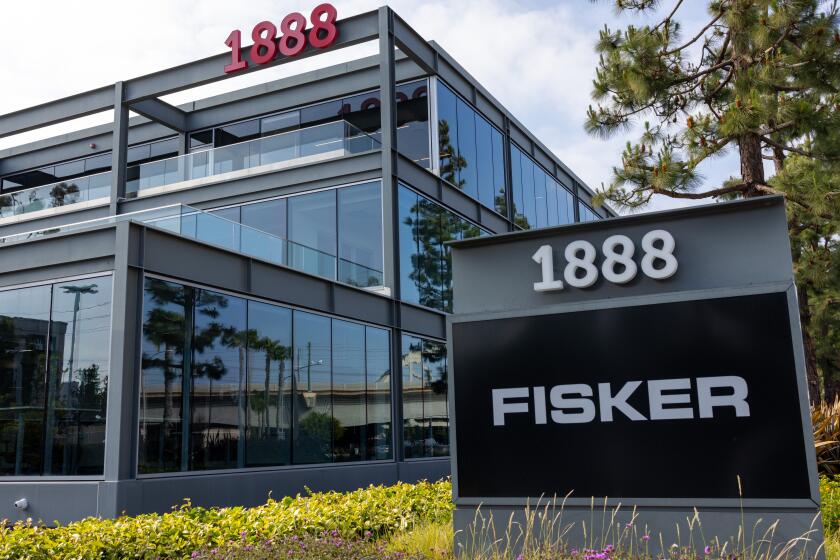Electric to the Rescue
Spurred by escalating government demands, high fuel prices and greenhouse gas emissions standards, automakers are rolling out a whole new crop of electric vehicles that are affordable to buy or lease and cheap to run.
Among the EVs are the $27,000 Smart Fortwo ED, the $27,000 Chevy Spark EV, the $29,000 Nissan Leaf, the $32,000 Fiat 500e, the $35,000 Ford Focus Electric and the lease-only Honda Fit EV.
Toss in more expensive options such as the $50,000 Toyota Rav4EV and $68,000 Tesla Model S, and Californians now have quite the selection when it comes to going all-electric.
“A growing electric charging infrastructure, consumer incentives like single-occupancy
carpool lane access and a temperate climate make Southern California the ideal place to own and drive an electric vehicle,” said Robert Langford, manager of plug-in electric vehicle sales and marketing at American Honda Motor Co.
Local consumers are certainly responding. According to automotive data research company Polk, more than one-third of all new electric vehicles sold in the U.S. during the first six months of this year were registered in the Los Angeles and San Francisco metro areas. And Pike Research estimates that electric vehicle ownership in the Golden State will top 360,000 by 2017 — more than twice the number of any other state.
John O’Dell, senior editor at Edmunds.com and a member of the National Research Council’s Committee on Transitions to Alternative Vehicles and Fuels, agrees that the new wave of electric cars will prove very attractive to drivers who have been waiting for a more affordable way to go green. “These [vehicles] satisfy many early adopters,” he said.
Edmunds posts a comparison of electric vehicles on its website. “What our editors found is that different vehicles will suit different purposes, just like any other car segment,” O’Dell said.
“The current fleet of electric cars is surprisingly similar in the areas of vehicle type, price and range,” said Karl Brauer, a senior analyst for Kelley Blue Book. “Because of their similarities, the primary differentiator between most electric cars is their exterior design. The Fiat 500e is a two-door and has an extremely fun-to-drive character. The rest are all four-door hatchbacks with nearly identical driving dynamics and similar interior space.”
It’s not just lower MSRPs that are attracting new buyers. The latest electrics take less time to recharge and can go farther than their predecessors. The Ford Focus Electric can accomplish a full recharge in just four hours; the Fiat 500e takes about six. EVs that offer a level-3 DC fast-charging option can accomplish an 80% charge in around 20 minutes.
Technically it’s possible to create an electric car with a 500-mile range, but the drawbacks are the weight and cost of a battery that will power a car that far. As a result, automakers are forced to perform a balancing act between range, weight and cost.
For example, the 2013 Nissan Leaf is 70 pounds lighter than the previous model, a weight loss that extended the range to 120 miles. To achieve the reduction, every aspect of the vehicle was reassessed and in some cases redesigned, for instance, with a brand-new Bose sound system created to be as lightweight as possible.
Financial incentives have also made EVs more desirable — in particular, long-term leases with very attractive terms. After tax credits are taken into account, the actual cost of most EVs falls below $30,000. This results in lease rates of $200 to $300 per month, which is about as much as you’d pay for a gas-guzzling compact car.
Despite lower prices and technological improvements, though, many drivers remain wary of going all-electric. “Mainstream buyers want cars that have all the features, utility and convenience of gasoline cars,” O’Dell said. “Things such as cargo and passenger capacity, range, charging times and public charger availability limit the EV’s practicality.”
The popularity and public perception of the new electrics will largely determine the direction that American electric motoring takes in the future.
“There aren’t many all-new electric cars coming in the near-term,” Brauer said. “Though it’s likely the current models will continue to get upgrades related to driving range and in-car technology, it’s also possible that prices will continue to drop as production increases and the costs to build them go down.”
—Joe Yogerst, Brand Publishing Writer
More to Read
Inside the business of entertainment
The Wide Shot brings you news, analysis and insights on everything from streaming wars to production — and what it all means for the future.
You may occasionally receive promotional content from the Los Angeles Times.








